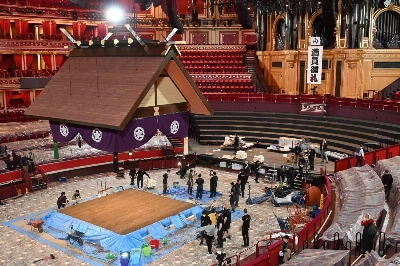Given Marcel Duchamp's pivotal role in the history of modern art, you could say that connections could be drawn between his work and that of any other artist. In Japan, his controversial ideas have definitely had a strong influence on modern art, both before and since World War II.
In the 1920s, Tomoyoshi Murayama's MAVO group was inspired by Duchamp to break down the boundaries between art and life by making use of all possible media, and their work conveyed the social unease of an increasingly politicized and industrialized Japan. After the war, Japanese avant-garde artists of the mid-1960s who were active in Fluxus and Conceptual Art took a renewed interest in Duchamp's ideas, and a version of "The Bride Stripped Bare By Her Bachelors, Even" (1915-23; aka "The Large Glass") was built in Tokyo.
His Japanese legacy was broken, though, when the following generation of artists centered around the Mono-ha group rejected the influence of Western conceptualism in favor of material-based works. Thus, when the next generation then rejected Mono-ha's values, it marked a true turning point: the first time that Japanese artists were responding directly to a homegrown art movement rather than a Western style filtered through Japanese practitioners.

















With your current subscription plan you can comment on stories. However, before writing your first comment, please create a display name in the Profile section of your subscriber account page.